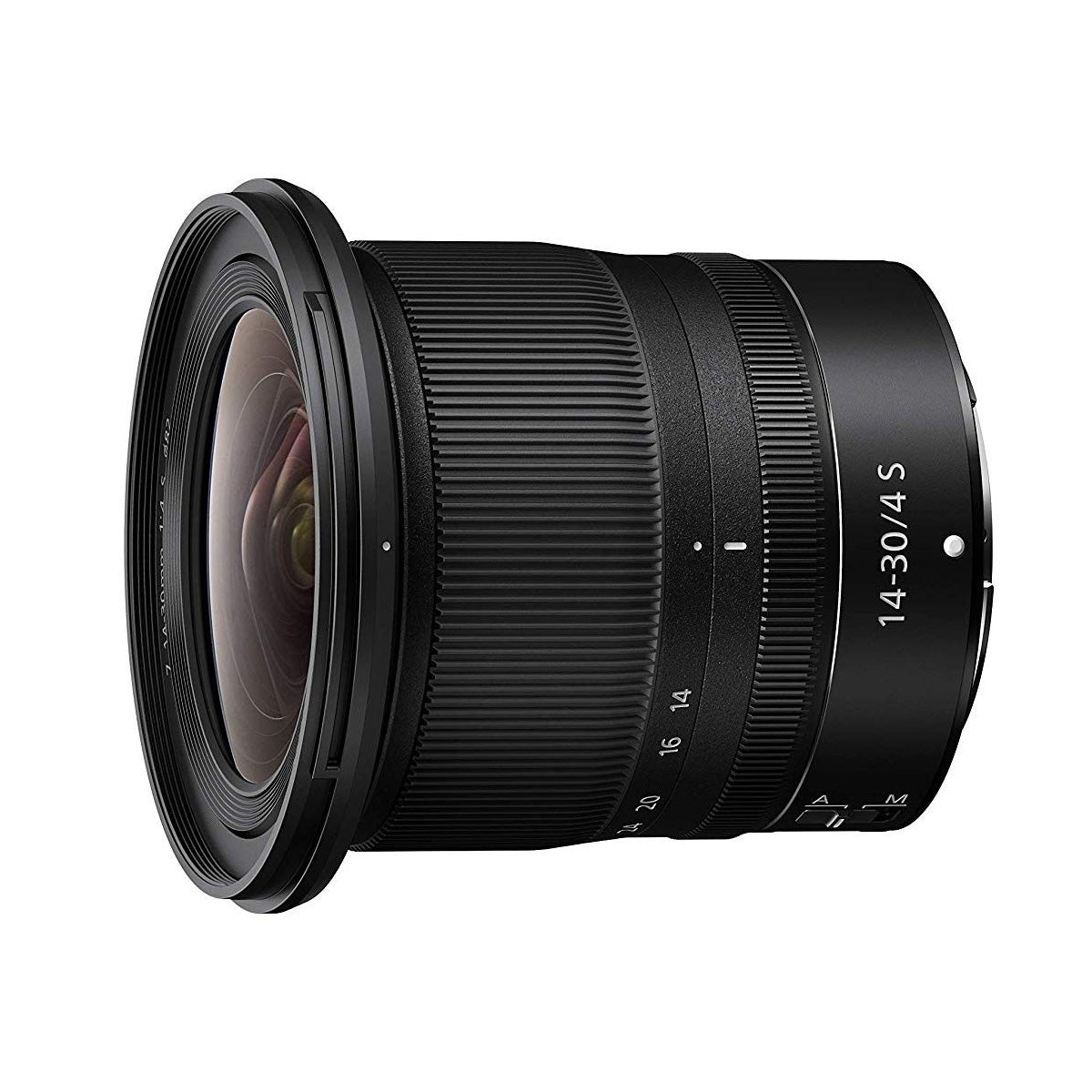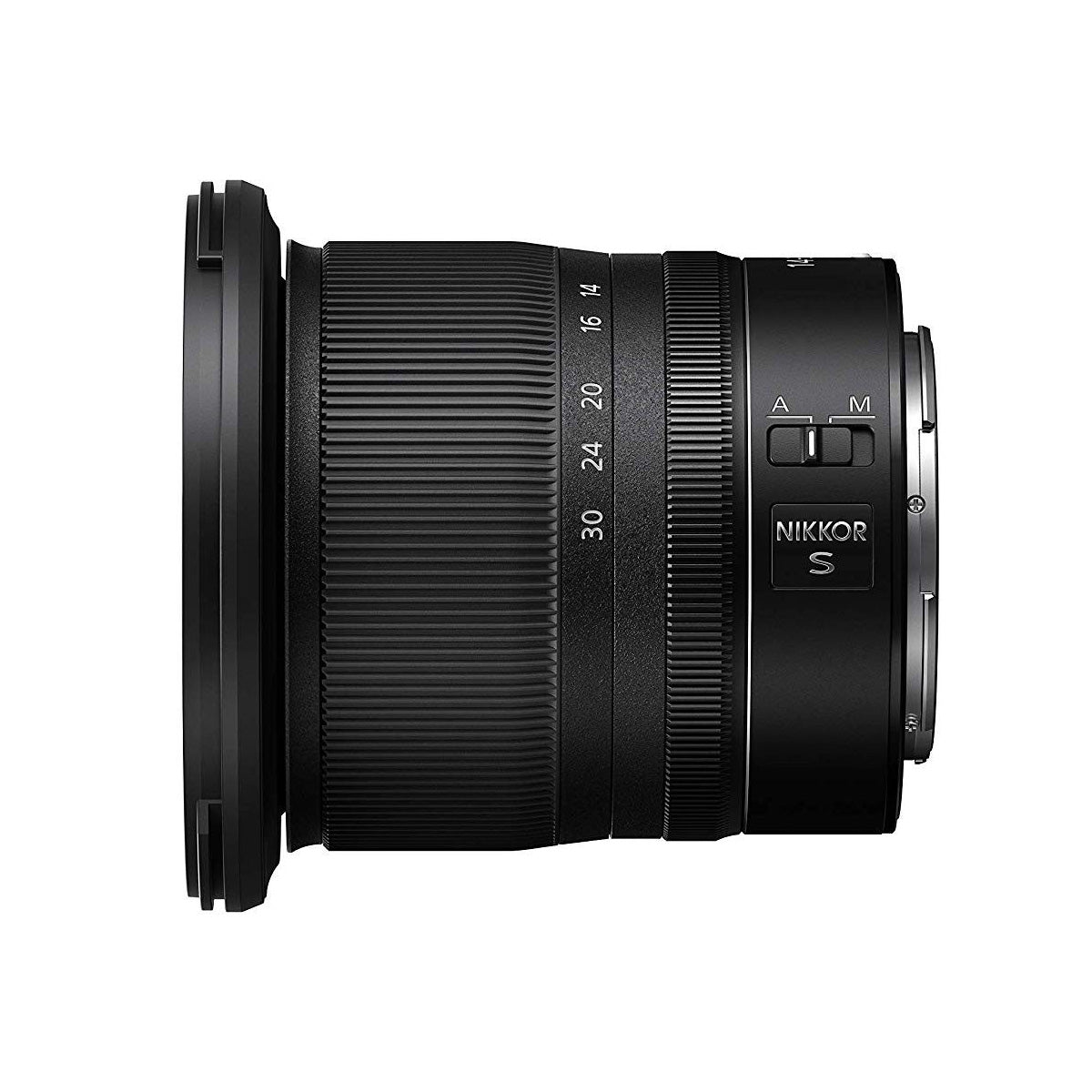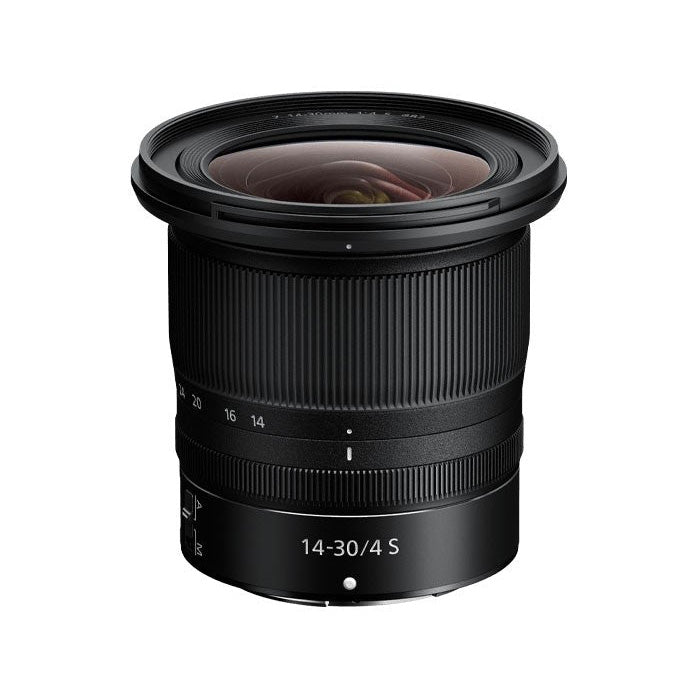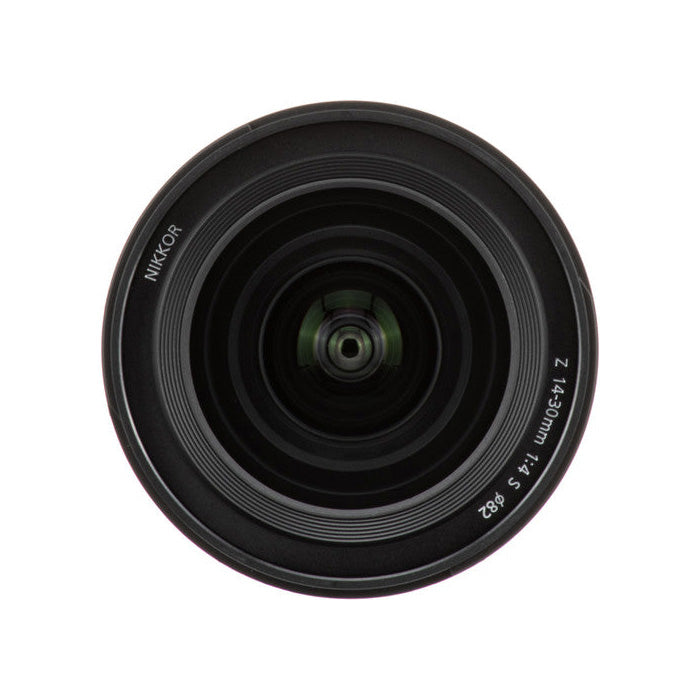Product Description
Nikon NIKKOR Z 14-30mm f/4 S Lens
Overview
The Nikon NIKKOR Z 14-30mm f/4 S Lens is a compact, ultra-wide-angle zoom lens designed exclusively for Nikon's Z-series mirrorless cameras. Featuring cutting-edge optical technologies, robust construction, and user-friendly features, this lens is ideal for landscape, architectural, and astrophotography enthusiasts. With its lightweight and travel-friendly design, it's perfect for photographers on the move.

Key Features
- Mount: Nikon Z Mount
- Focal Length: 14-30mm
- Maximum Aperture: f/4 (constant across the zoom range)
- Lens Design: S-Line ultra-wide zoom
- Coatings: Nano Crystal Coat and Super Integrated Coating for superior contrast and reduced flare
- Filter Compatibility: Accepts 82mm filters, a unique feature for ultra-wide lenses

Optical Excellence
-
Advanced Optical Elements:
- Four extra-low dispersion (ED) elements and four aspherical elements for precise correction of chromatic aberrations and distortions.
- Provides sharpness, vibrant colours, and edge-to-edge clarity.
-
Nano Crystal and Super Integrated Coatings:
- Effectively suppress ghosting and flare, ensuring high contrast and vivid colour reproduction, even in challenging lighting conditions.

Autofocus and Handling
-
Stepping Motor (STM):
- Delivers fast, quiet, and precise autofocus, ideal for both stills and video.
-
Manual Focus Override:
- Seamlessly switch between autofocus and manual focus for added control.
-
Programmable Control Ring:
- Assignable to focus, aperture control, or exposure compensation for intuitive operation.
-
Internal Focusing:
- Maintains the lens's compact size during focus adjustments.

Build and Durability
-
Weather Sealing:
- Dust- and moisture-resistant construction ensures reliability in challenging environments.
-
Fluorine Coating:
- Repels dust, water, and grease for easy maintenance of exposed lens elements.
-
Compact and Lightweight:
- Retractable design for easy portability; weighs just 485g.
-
Rounded 7-Blade Diaphragm:
- Produces smooth, natural bokeh for creative compositions.

Applications
- Landscape Photography: Capture sweeping vistas with sharp detail.
- Architecture: Minimise distortion while emphasising intricate details.
- Astrophotography: Wide focal lengths and coatings ensure excellent light transmission and minimal aberration.
- Travel: Lightweight design and robust build make it perfect for adventures.

Specifications
- Focal Length: 14-30mm
- Maximum Aperture: f/4
- Minimum Aperture: f/22
- Lens Construction: 14 elements in 12 groups
- Filter Size: 82mm
- Weight: 485g
- Dimensions: Approx. 89mm x 85mm

Included Accessories
- Lens Hood: HB-86
- Front Lens Cap: LC-82B
- Rear Lens Cap: LF-N1
- Lens Case: Included for added protection during travel.

Why Choose the Nikon NIKKOR Z 14-30mm f/4 S Lens?
- Versatile Ultra-Wide Angle: Ideal for a variety of shooting scenarios, from landscapes to interiors.
- Exceptional Image Quality: Advanced optics deliver stunning sharpness and clarity.
- Durable and Portable: Designed for professionals and enthusiasts who need a reliable, travel-friendly lens.
- Innovative Features: Programmable control ring and filter compatibility set it apart from other ultra-wide lenses.

Elevate your photography with the Nikon NIKKOR Z 14-30mm f/4 S Lens—a lens that combines uncompromising optical performance, user-friendly features, and rugged build quality to meet the demands of modern photographers and videographers.
Payment & Security
Your payment information is processed securely. We do not store credit card details nor have access to your credit card information.





















